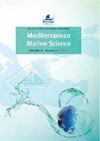地中海海洋洞穴中的引进物种:日益增加但被忽视的威胁
IF 2.3
3区 环境科学与生态学
Q1 MARINE & FRESHWATER BIOLOGY
引用次数: 7
摘要
海洋洞穴是受保护的栖息地,生物多样性高,生态恢复力低,容易受到包括生物入侵在内的多重压力的影响。因此,迫切需要海洋洞穴中外来物种的全面清单及其影响评估。本研究旨在根据最新的可用清单(2014年),提供地中海海洋洞穴中引入物种的更新和验证清单。在过去八年中,更新名单中的引进物种数量(2022年12月状态)翻了一番。更新后的清单包括属于12个门的126个物种(107个外来物种,15个隐源物种,两个隐扩展物种和两个可疑物种)。洞穴中引入物种数量最多的是地中海东部(105个),特别是黎凡丁(99个)和爱琴海(34个)生态区。大多数引进物种起源于印度洋-太平洋。大多数物种通过苏伊士运河进入地中海,其次是通过船只转移的物种。大多数引入物种都是在洞穴的入口和半黑暗区发现的(分别为60种和52种),只有19种来自黑暗区。大约28%的引进物种对生态系统有很大影响,其中包括地中海十种最严重入侵物种中的九种。尽管缺乏关于引进物种对海洋洞穴生物多样性影响的数据,但鉴于其物种丰富度高,以及最近报道的地中海东部一些外来鱼类的数量激增,我们的研究结果强调了持续清查和监测的必要性。本文章由计算机程序翻译,如有差异,请以英文原文为准。
Introduced species in Mediterranean marine caves: an increasing but neglected threat
Marine caves are protected habitats with high biodiversity and low ecological resilience, vulnerable to multiple pressures including biological invasions. Therefore, comprehensive lists of alien species in sea caves and assessments of their impacts are urgently needed. This study aimed to provide an updated and validated list of introduced species in marine caves of the Mediterranean Sea based on the latest available checklist (2014). The number of introduced species in the updated list (December 2022 status) has doubled in the last eight years. The updated checklist includes 126 species (107 alien, 15 cryptogenic, two crypto-expanding, and two questionable) belonging to 12 phyla. The highest number of introduced species in caves was evidenced in the eastern Mediterranean (105), specifically in the Levantine (99) and the Aegean (34) ecoregions. Most introduced species originated from the Indo-Pacific. Most species entered the Mediterranean Sea through the Suez Canal, followed by species transferred via vessels. Most introduced species were found at the entrance and in the semi-dark zone of caves (60 and 52 species, respectively), with only 19 species being reported from the dark zone. Approximately 28% of the introduced species have a high impact on ecosystems, including nine of the ten worst invasive species in the Mediterranean Sea. Despite the lack of data on the impact of introduced species on marine cave biodiversity, given their high species richness and the recently reported population explosions of some alien fish in the eastern Mediterranean, our results highlight the need for continuous inventorying and monitoring.
求助全文
通过发布文献求助,成功后即可免费获取论文全文。
去求助
来源期刊

Mediterranean Marine Science
MARINE & FRESHWATER BIOLOGY-
CiteScore
5.20
自引率
17.90%
发文量
34
审稿时长
>12 weeks
期刊介绍:
The journal Mediterranean Marine Science (MMS), published by the Hellenic Centre for Marine Research (HCMR), issues three volumes annually. The journal welcomes original research articles, short communications, New Mediterranean Biodiversity records, extended reviews, comments, and Theme sections in all fields of Oceanography, Marine Biology, Marine Conservation, Fisheries and Aquaculture in the Mediterranean area and the adjacent regions. All content is peer reviewed.
 求助内容:
求助内容: 应助结果提醒方式:
应助结果提醒方式:


